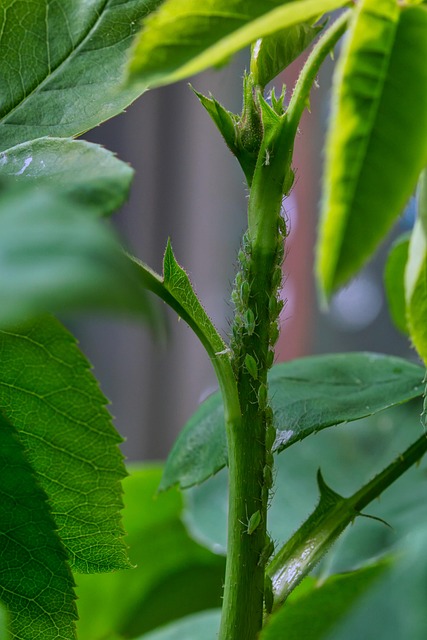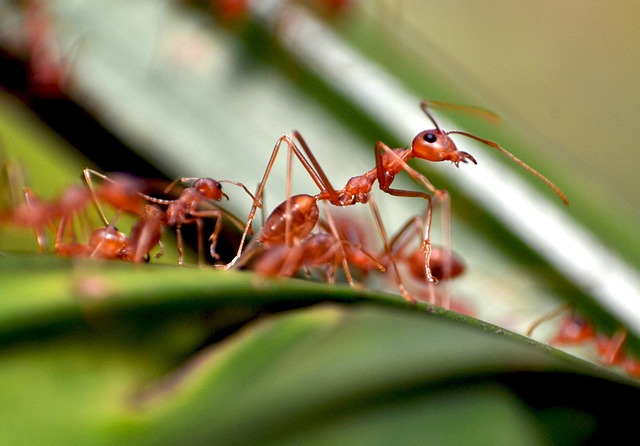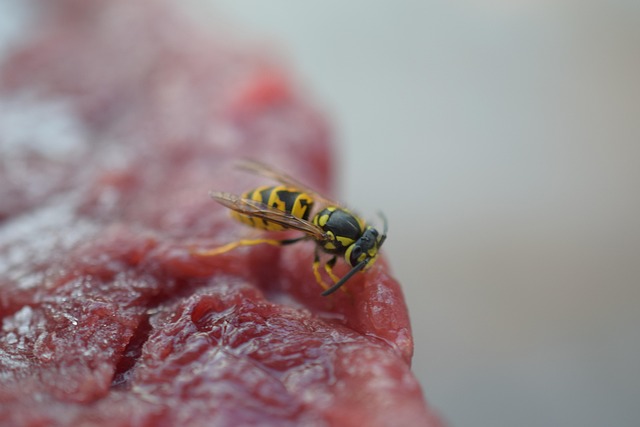Eco-friendly pest control offers a sustainable approach prioritizing environmental safety over chemical solutions. It leverages natural resources, non-toxic substances, and techniques like prevention, physical barriers, beneficial insects, plants, and repellents to eliminate pests without harming ecosystems, pets, or humans. Key pests include termites, mosquitoes, and roaches, managed through natural repellents, beneficial insects, and targeted non-toxic applications. Natural methods, such as herbs (lavender, peppermint, citronella), ladybugs, lacewings, mesh screens, and traps, provide a chemical-free, comprehensive approach. Eco-friendly practices preserve biodiversity, protect ecosystems, and promote balance in nature, with products certified by EPA and packaged sustainably. Implementation involves identifying pests, using natural repellents, maintaining sanitation, and landscaping for pest deterrence. The growing trend towards eco-friendly pest control supports sustainability, reduces chemical exposure, and fosters a healthier relationship between humans and the environment.
Discover the transformative power of Eco-Friendly Pest Control in this comprehensive guide. Learn how adopting a green approach can mitigate environmental harm caused by common pests like ants, roaches, and termites. Explore natural solutions, unlock the benefits of eco-conscious management, and master the art of selecting effective yet safe products. From strategic implementation tips for homes and businesses to insights on the future of sustainable pest control, this article is your one-stop resource for environmentally friendly bug extermination.
Understanding Eco-Friendly Pest Control: The Green Approach

Eco-friendly pest control is a methodical and responsible approach to bug extermination that prioritizes environmental safety and health over traditional chemical solutions. This green alternative leverages natural resources, non-toxic substances, and innovative techniques to eliminate pests while minimizing harm to ecosystems, pets, and humans. Unlike conventional methods that often rely heavily on synthetic pesticides with potential long-term negative impacts, eco-friendly pest control focuses on prevention, non-chemical interventions, and targeted treatments.
The core philosophy behind eco-friendly pest control is to maintain a balanced ecosystem within homes, gardens, and surrounding landscapes. It involves understanding the habits and behaviors of pests, creating physical barriers, utilizing beneficial insects and plants, and employing natural repellents and traps. By adopting these strategies, individuals can effectively manage pest populations without compromising their well-being or damaging the environment.
Common Pests and Their Environmental Impact

In the pursuit of eco-friendly bug extermination, understanding common pests and their environmental impact is paramount. Termites, for instance, are notorious for causing significant structural damage but have minimal direct ecological harm. Their primary issue lies in the potential disruption of soil ecosystems due to their feeding habits. Similarly, mosquitoes, while irritating and sometimes disease carriers, play a role in aquatic food chains—but their control must be balanced to avoid adverse effects on beneficial insects and water bodies.
Roaches, often considered household pests, have a more complex relationship with the environment. They are adaptive and resilient, which makes them hard to eradicate but also suggests they could serve as indicators of broader environmental health issues. Eco-friendly pest control focuses on methods that minimize these impacts, such as using natural repellents, beneficial insects, and targeted applications of non-toxic pesticides, ensuring a harmonious balance between pest management and environmental conservation.
Natural Solutions for Bug Extermination

In the quest for effective yet sustainable bug extermination, natural solutions offer a promising alternative to traditional eco-unfriendly methods. Eco-friendly pest control leverages the power of nature’s own defenses against insects and pests. Instead of relying on toxic chemicals that can harm both humans and the environment, these solutions provide safe and non-lethal ways to manage insect infestations. Herbs like lavender, peppermint, and citronella are renowned for their insect-repelling properties; planting them around homes or using them in homemade sprays can deter a range of common pests.
Beneficial insects, such as ladybugs and lacewings, play a crucial role in eco-friendly bug extermination by feeding on garden pests like aphids and mealybugs. Encouraging these natural predators in your yard or garden helps maintain a balanced ecosystem. Additionally, physical barriers like fine mesh screens and traps designed for specific pests offer effective protection without resorting to harmful chemicals. These natural solutions not only protect your home and family from bugs but also contribute to a healthier, more sustainable environment.
Benefits of Eco-Conscious Pest Management

Adopting eco-conscious pest management practices offers numerous benefits, both for the environment and your health. Traditional bug extermination methods often rely on toxic chemicals that can persist in the soil, water bodies, and even indoors, posing risks to humans and wildlife. In contrast, eco-friendly pest control alternatives focus on minimizing these negative impacts while effectively ridding your space of unwanted pests.
By opting for eco-friendly pest control, you contribute to preserving biodiversity, promoting a healthier ecosystem, and ensuring safer living conditions. These methods typically employ natural predators, beneficial insects, plant-based repellents, and innovative non-toxic solutions. Such an approach not only reduces environmental pollution but also helps maintain the delicate balance of nature.
Choosing Eco-Friendly Products: What to Look For

When considering eco-friendly bug extermination, one of the first steps is to choose products that align with your commitment to sustainable practices. Look for eco-friendly pest control solutions certified by reputable organizations, such as the Environmental Protection Agency (EPA), that prioritize non-toxic and biodegradable ingredients. These products are designed to be safe for both people and pets, minimizing potential health risks while effectively addressing pest issues.
Key indicators of eco-friendly bug spray or treatments include active ingredients derived from natural sources like plant extracts, essential oils, or beneficial insects. Avoid products with synthetic chemicals, such as pyrethroids or organophosphates, which can have harmful effects on the environment and non-target species. Additionally, opt for brands that focus on packaging sustainability by using recyclable or biodegradable materials, further reducing your ecological footprint.
Implementation Strategies for Your Home or Business

Implementing eco-friendly pest control methods in your home or business is a multifaceted approach that requires careful planning and consistent action. Start by identifying the specific pests you’re dealing with, as different species necessitate unique strategies. Research natural repellents and beneficial insects that can help manage infestations without resorting to harmful chemicals. For instance, introducing ladybugs or lacewings can effectively control aphids while encouraging a balanced ecosystem.
Regular sanitation and maintenance are key components of successful eco-friendly bug extermination. Keep your space clean and clutter-free to minimize hiding places for pests. Implement sealed containers for food storage and regularly inspect for signs of infestation. Additionally, consider adjusting your landscaping to make your property less inviting to pests. Planting herbs like mint or lavender can act as natural deterrents, while ensuring proper drainage and trimming back foliage provides fewer opportunities for bugs to thrive.
The Future of Sustainable Pest Control

The future of pest control lies in embracing eco-friendly methods that provide effective bug extermination without harming our environment. As awareness of ecological impact grows, so does the demand for sustainable solutions. Eco-friendly pest control not only minimizes exposure to toxic chemicals but also promotes biodiversity and overall ecosystem health. Innovations such as natural repellents, beneficial insects, and targeted treatments are gaining traction. These methods mimic nature’s own defenses against pests, offering a safer and more harmonious approach to protecting our homes and farms from unwanted invaders.
By adopting these sustainable practices, we can ensure that pest control is both effective and environmentally responsible. This shift towards eco-friendly solutions benefits everyone – from reducing ecological footprints to fostering a healthier balance between humans and nature. As research continues, expect to see even more advanced and accessible tools for eco-friendly pest management, making it easier than ever to protect what’s important while preserving the planet for future generations.
